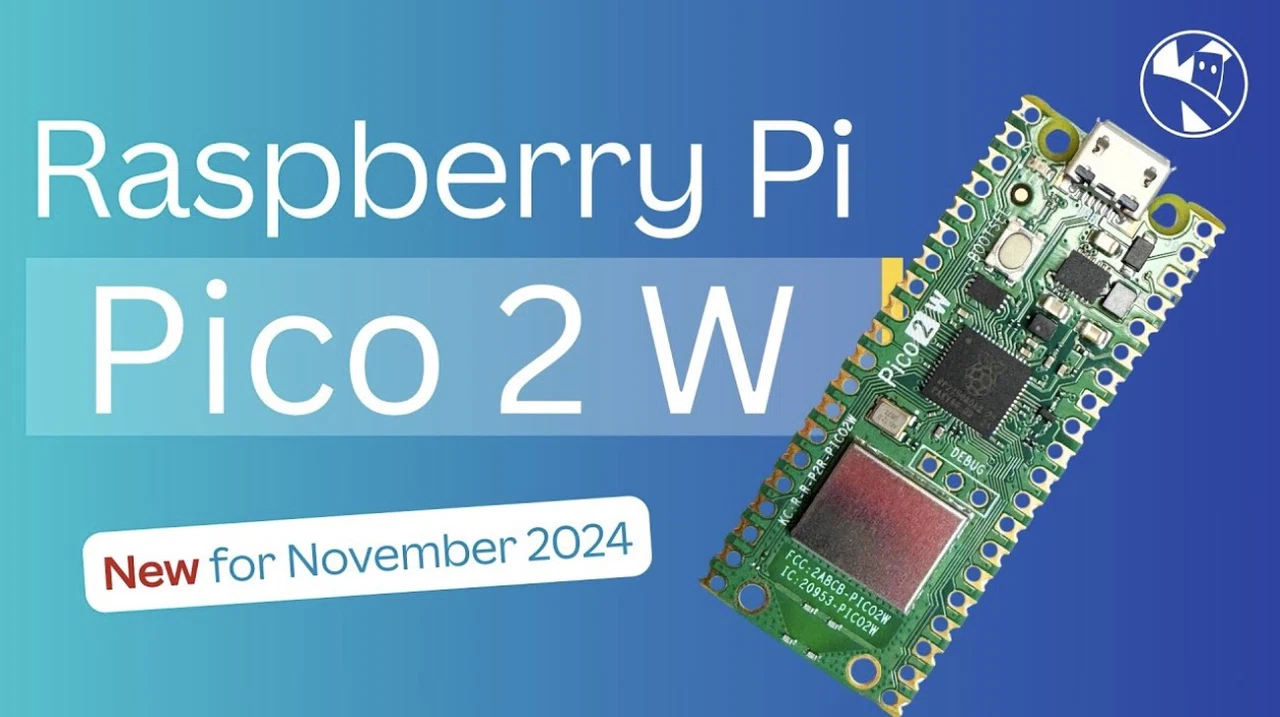The Raspberry Pi Pico 2 W, built around the RP2350 microcontroller, offers a compact solution for scalable hardware projects
However, what exactly is a microcontroller? Microcontrollers, as their name implies, enable the management of other electronic components or devices. Unlike microcontrollers, which are particularly engineered to interact with other devices, regular Raspberry Pis are general-purpose single-board computers.
Microcontrollers are typically power-efficient, compact, and inexpensive. The Pico 2 W has numerous input and output pins on the sides, as evidenced by the tiny yellow holes that adorn the board. These pins facilitate communication with other components. For instance, the image above illustrates this.
To circumvent the necessity of soldering, hobbyists typically initiate the development of a microcontroller-based project with a breadboard. In the future, they can solder the microcontroller to other components.
Unlike traditional Raspberry Pi computers, microcontrollers do not operate with a full-fledged operating system. The microprocessor executes your code directly.
For development purposes, the Pico 2 W supports MicroPython, a Python-inspired language for microcontrollers, and C and C++. The new board maintains hardware and software compatibility with the previous iteration of boards.
The new $7 Pico 2 W has a dual-core, dual-architecture processor that operates at 150MHz. A pair of Arm Cortex-M33 cores and a pair of open-hardware Hazard 3 RISC-V cores are available for development on the microcontroller.
Arm Cortex-M33 cores are frequently employed in the microcontroller industry; however, some individuals may favor RISC-V cores. When ordering new boards, selecting a particular microcontroller is not required; rather, all can be configured in software.
The RP2350 boasts 520 KB of on-chip SRAM, while the Pico 2 W has 4 MB of onboard flash memory to store your code. Once more, this is not a computing device. It is a microcontroller!
With respect to wireless capabilities, the Pico 2 W is compatible with Bluetooth 5.2 and Wi-Fi (2.4GHz 802.11n). It would have been beneficial to have 5GHz support for increased versatility; however, it may be included in the subsequent revision.
Raspberry Pi also provides the Pico 2 without wireless capabilities for $5, in case you do not require them for conformance certification or pricing purposes.
Industrial and electronics manufacturing organizations are progressively employing Raspberry Pi’s products. Raspberry Pi reported that the industrial and embedded segment accounted for 72% of its sales when it became a public company this year.
This is likely why individual units of the Pico 2 boards are available for purchase, in addition to 480-unit reels. The following is an image of a reel of Pico 2 microcontroller boards:



